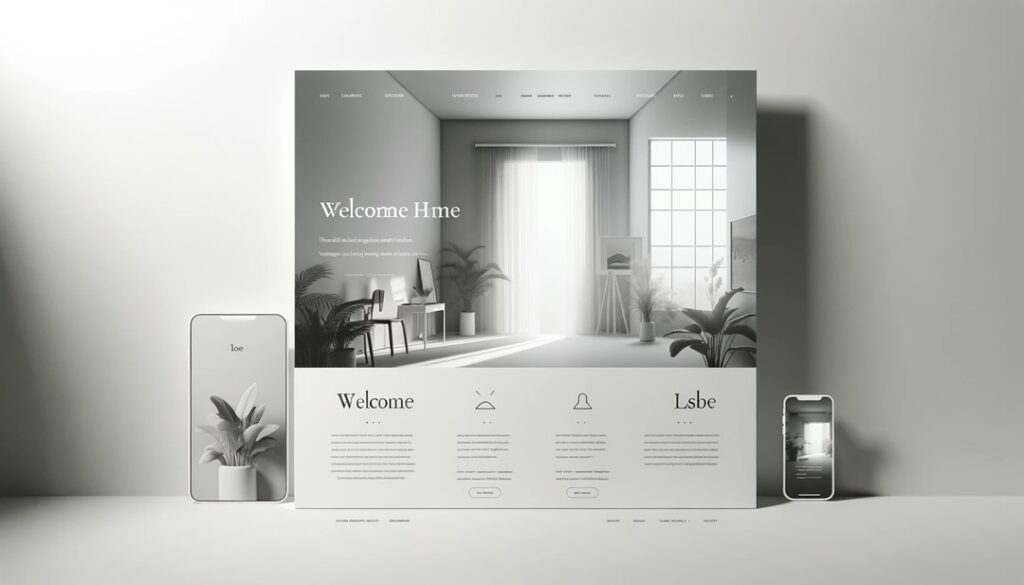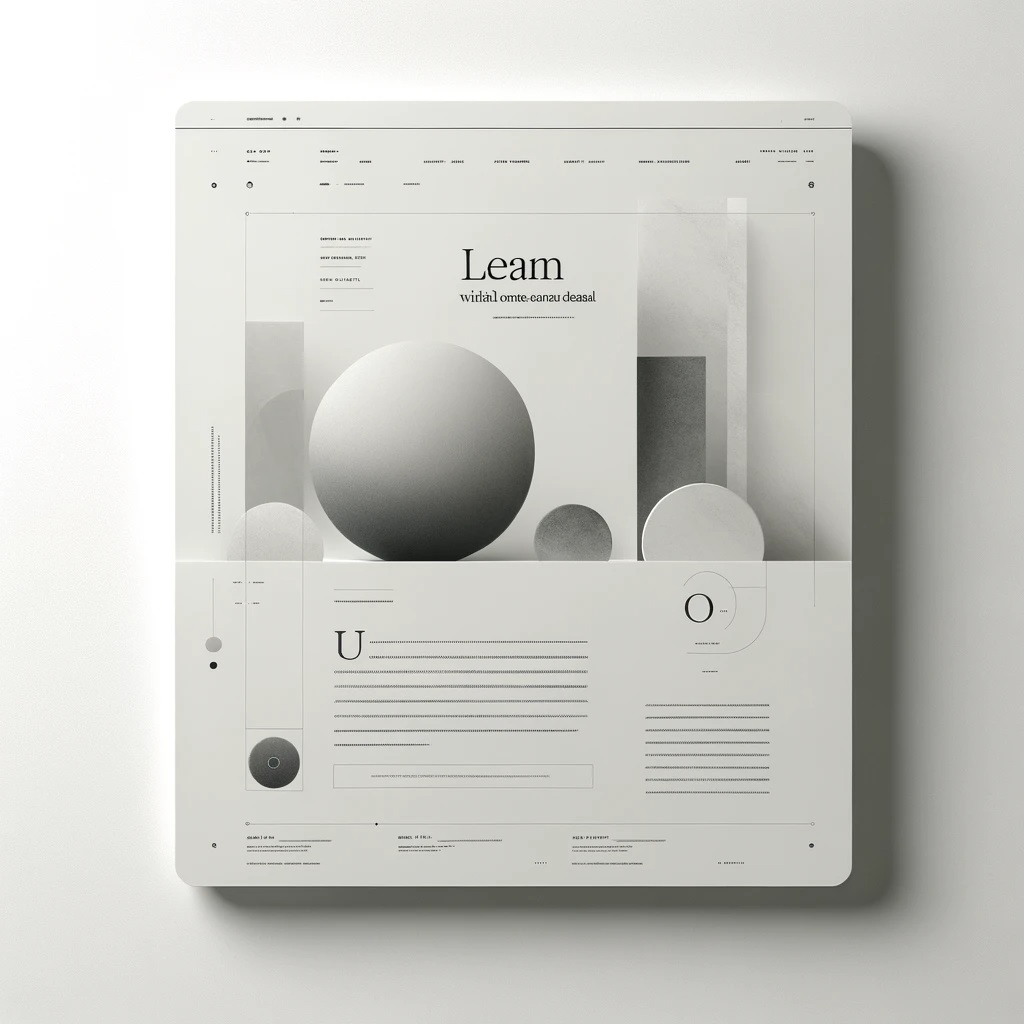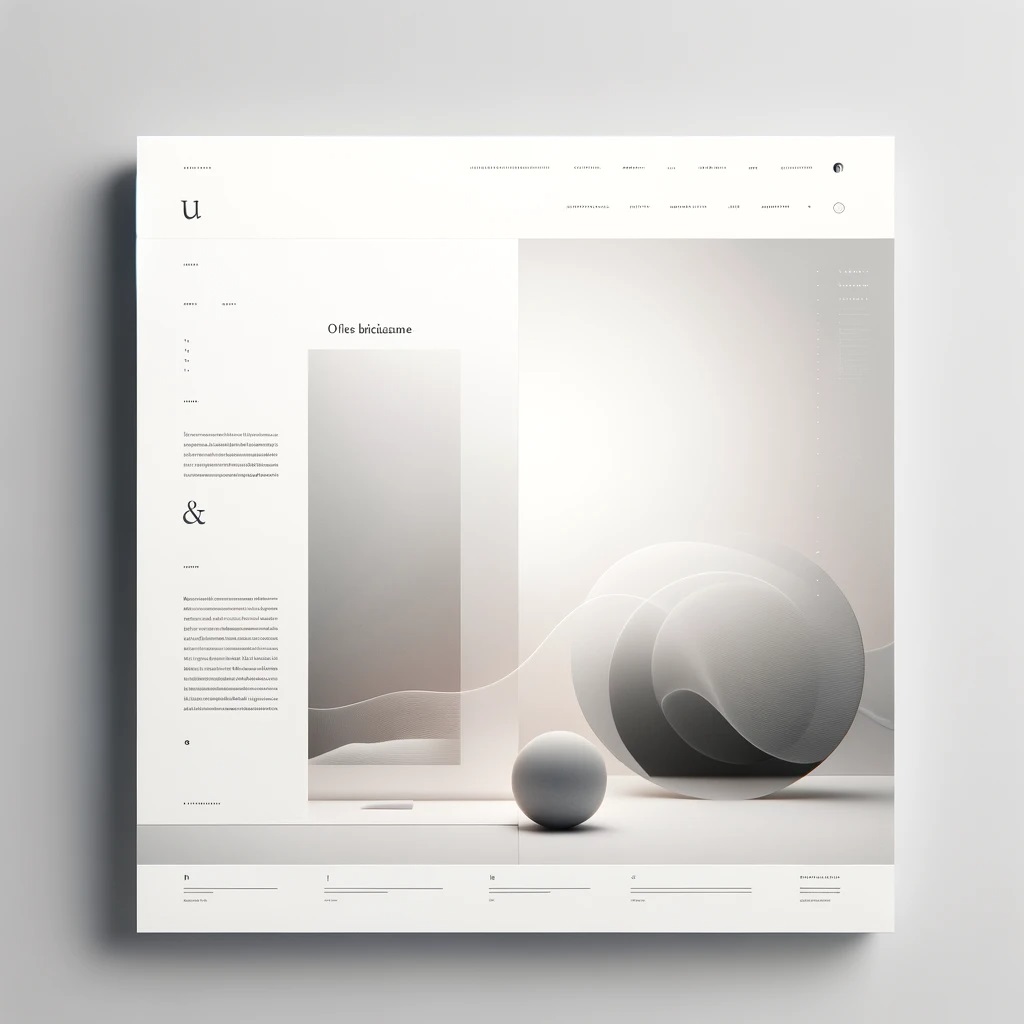What is Minimalist Web Design?
You’ve heard the phrase “less is more,” and when it comes to web design, that couldn’t be more true. Minimalist web design is all about using minimal elements to create maximum impact for your business.
As a web development company, we’ve seen firsthand how this approach can produce incredible results. At its core, minimalist design strips away the unnecessary, allowing your content to become the main focus. It’s about guiding your visitors’ attention to the most important information without any distractions.
While this clean, simple style is popular today, it’s a stark contrast to the early days of the internet, which were often cluttered and overwhelming. By embracing minimalism, you’re not just following a trend; you’re creating a clearer, more effective experience for your customers.

Minimalism
Minimalism brings out the most important content (generally to the forefront) and eliminates any potential distractions to the user. Canadian Website Designs can achieve such a result if you feel this is a design that works for you. Generally, if there are too many elements in a webpage it could distract or even confuse a user about where to look. As a result, this will drive them away from the main point of your website – which is to sell a product or service!
The Essence of Minimalism in Web Design
At its core, great minimalist design uses a simple black and white palette with a strategic pop of color to guide a user’s eye. This creates a clear focal point, making sure your most important message stands out. When too many elements or competing designs are added, it’s easy for the user to get lost and miss what your site is all about.
Finding that perfect balance of minimal content and impactful design is our specialty. We believe that true minimalism isn’t just about removing things; it’s about thoughtfully rethinking what’s truly essential. It’s about keeping only the elements on your website that are absolutely necessary for a user to understand your product or service. This approach ensures your website is not only beautiful but also incredibly effective.

Before you begin designing, it’s a good idea to think about what you absolutely need to include. Start with the essentials you want people to see, like your logo, a brief introduction, and clear navigation.
For a minimalist design, you can often leave out things like:
- Social media icons
- Extra descriptive text
- Pages with more than three main sections
- Secondary navigation menus
It is important in minimalist design to cut out any unnecessary elements or to merge sections into a simple layout. Another technique is to actually divide the content into separate pages which give each element of content more emphasis. Canadian Website Designs will help you with that!
Minimalist web designs should have a lack of color, texture, lines, content, everything. However, be mindful of being too bare, then the website just becomes boring. The main point is to make one central thing the most important focal point of your website. Canadian Website Designs achieves minimalist web designs for all of our clients that desire it.
Understanding Minimalist Website Design
The Definition of Minimalism in Web Design
Minimalist website design is an approach that focuses on simplicity and functionality. It strips away unnecessary elements, colors, shapes, and textures, leaving only the essential components needed for effective communication.
Key Principles of Minimalism in Web Design
- Simplicity: The design is clean and uncluttered, with fewer elements and more whitespace.
- Functionality: Every element serves a purpose and contributes to the site’s overall goal.
- Subtract Until It Breaks: Remove elements until the design stops working as intended, then add back the last removed piece.
- Color Minimalism: Use a simple color palette, often with one accent color for emphasis.
- Typography: Bold, legible typography that communicates effectively.

Why Minimalist Website Design Works
Simplifying your website’s design can have a powerful impact on your business. Here’s why a minimalist approach is so effective:
A Better Experience for Your Users
A clean, uncluttered design makes it easier for people to find what they’re looking for. By removing distractions, you reduce the cognitive load on your visitors, making their experience more intuitive and enjoyable. This leads to higher engagement and, ultimately, better conversion rates.
Faster, More Efficient Performance
Less is more when it comes to loading times. With fewer elements and less data to load, your website will be faster and more responsive. This not only improves user satisfaction but also gives you a significant boost in search engine rankings.
A Modern, Professional Look
Minimalist design has a timeless, polished quality. Its clean and professional aesthetic builds a sense of trust and credibility with your audience, positioning your brand as modern and reliable.

Implementing Minimalist Website Design: A Step-by-Step Guide
Start with a Content-First Approach
Before you dive into the design, take a good look at your content. In minimalist design, the goal is to make your content shine, so it needs to be the main focus of your project.
Define Your Site’s Core Functionality
Identify the key actions you want users to take on your site. These will guide your design decisions.
Use a Grid Layout
Grid layouts provide a structured, clean look that is central to minimalist design.
Implement a Simple Color Palette and Typography
Limit your color palette and choose readable, attractive typography.
Prioritize Negative Space
Think of negative space as the intentional “empty” areas around the elements in a design. It’s the white, or blank, space that isn’t filled with text or images.
Instead of seeing it as wasted space, consider it a vital tool for creating a clean, balanced, and readable design. By giving your content room to breathe, negative space helps guide the eye and prevents the feeling of clutter.
FAQs about Minimalist Website Design
1. Isn’t minimalist design too simplistic?
While minimalist design might seem simplistic at first glance, its beauty lies in its functionality and purposefulness. Every element serves a clear purpose, and the design overall promotes an efficient, enjoyable user experience.
2. How does minimalist design impact SEO?
Minimalist website design can improve SEO through faster page loading times, improved mobile compatibility, and a better user experience – all of which are factors in search engine rankings.
3. Can minimalist design work for any website?
While minimalist design can work for many websites, it might not be suitable for sites that need to present a large amount of content or complex functionalities. It’s essential to align your design with your website’s purpose and audience.
Conclusion
Minimalist website design offers a path towards a clean, effective, and user-friendly web presence. By focusing on essential elements and functionality, minimalist design can enhance user experience, improve website performance, and elevate the aesthetic appeal of your site. As you navigate the vast ocean of web design, don’t underestimate the power of less – the power of minimalist website design.
Ready to transform your website into a sleek, user-friendly, and conversion-focused platform? Canadian Web Designs specializes in minimalist web design that combines aesthetics, functionality, and user experience. Contact us today and let’s harness the power of minimalist design for your online presence. Contact Canadian Web Designs Now
Canadian Web Designs: Your Partner in Minimalist Web Design. Building sleek, effective, and user-friendly websites. Let’s simplify your digital world together!